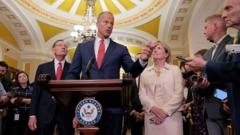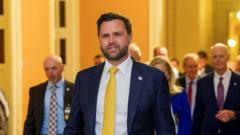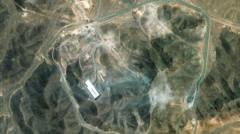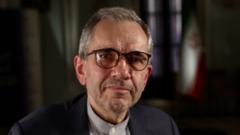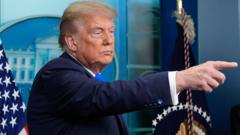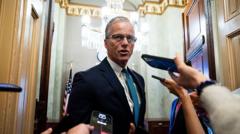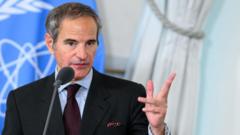As Canada embarks on a critical election, voters are faced with a choice between the Liberal Party’s incumbent Prime Minister Mark Carney and Conservative leader Pierre Poilievre, in a politically charged atmosphere fueled by President Trump's aggressive trade policies. This election represents not just a selection of leadership but a referendum on how best to confront the U.S., Canada's largest trading partner, amid rising tensions.
Canada's Election: Candidates Clash Over Trade Policies with the U.S.

Canada's Election: Candidates Clash Over Trade Policies with the U.S.
A crucial election in Canada sees candidates challenging Trump's trade tariffs, promising a robust response to America's economic aggressions.
The past month has seen intensified scrutiny of relationships with the U.S., marked by Trump's controversial tariffs and statements undermining Canadian sovereignty. In contrast to Mexico's more conciliatory trade approach, both candidates profess to adopt a more confrontational stance.
Carney, having only recently been in office, has emphasized the necessity of strength in negotiations. His commitment to retaliatory tariffs is evident, as are his goals to diversify Canada's trading options and lessen reliance on the U.S. market. His approach also includes rekindling relations with Europe for increased trade, although the extent of this potential remains uncertain. Furthermore, Carney has proposed creating an all-Canadian auto parts manufacturing network to stabilize the nation’s automotive industry from disruptions caused by U.S. tariffs.
Conversely, Poilievre, focusing on reinforcing Canadian manufacturing, aims to deter U.S. tariffs through a robust response. He stresses the need for energy diversification by expanding oil and gas shipments to European markets, a move necessitated by growing U.S. tariffs on crucial exports.
Polls indicate the Liberal Party may hold an edge in public support, suggesting they could secure sufficient parliamentary seats to maintain governance. This election could additionally reshape Canada's response to international trade, informing its future strategies and trajectory in an increasingly polarized economic climate.
As Canada votes, the implications of who leads against Trump’s policies promise to define not only their domestic politics but also their foreign relationships for years to come.
Carney, having only recently been in office, has emphasized the necessity of strength in negotiations. His commitment to retaliatory tariffs is evident, as are his goals to diversify Canada's trading options and lessen reliance on the U.S. market. His approach also includes rekindling relations with Europe for increased trade, although the extent of this potential remains uncertain. Furthermore, Carney has proposed creating an all-Canadian auto parts manufacturing network to stabilize the nation’s automotive industry from disruptions caused by U.S. tariffs.
Conversely, Poilievre, focusing on reinforcing Canadian manufacturing, aims to deter U.S. tariffs through a robust response. He stresses the need for energy diversification by expanding oil and gas shipments to European markets, a move necessitated by growing U.S. tariffs on crucial exports.
Polls indicate the Liberal Party may hold an edge in public support, suggesting they could secure sufficient parliamentary seats to maintain governance. This election could additionally reshape Canada's response to international trade, informing its future strategies and trajectory in an increasingly polarized economic climate.
As Canada votes, the implications of who leads against Trump’s policies promise to define not only their domestic politics but also their foreign relationships for years to come.

